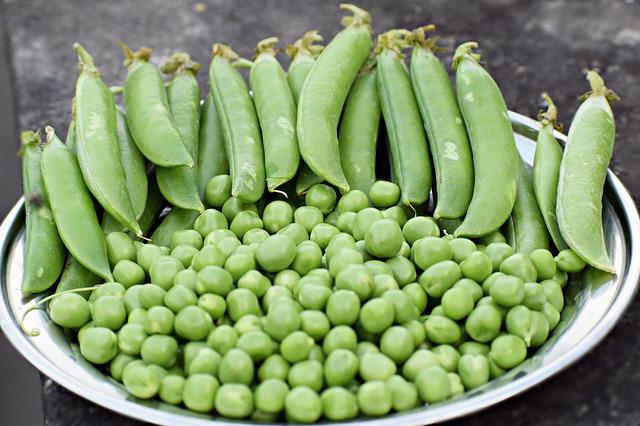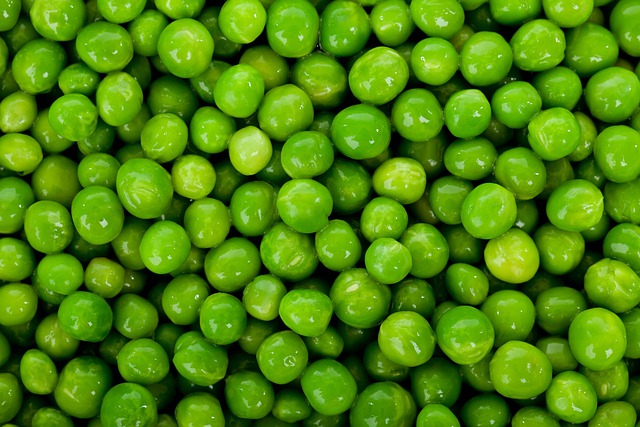Sugar snap peas are a type of edible-podded pea. The pod is crisp, and the peas are sweet and tender. You can eat sugar snap peas raw, steamed, or boiled. Sugar snap peas are a great source of vitamins A and C and fiber. They’re also low in calories, making them a healthy addition to your diet. If you’re looking for a way to add more vegetables to your meals, sugar snap peas are a good option. So, how to grow sugar snap peas?
Growing sugar snap peas is relatively easy and can be grown in most climates. Sugar snap peas need full sun and well-drained soil. They’re a cool-weather crop, so it’s best to plant them in the spring or fall. Harvest sugar snaps peas when the pods are plump, and the peas are still young. You can eat the peas raw or cooked.
You can find sugar snap peas in the produce section of most grocery stores. Look for ones that have bright green pods and are firm to the touch.
How To Grow Sugar Snap Peas?
Sugar snap peas are one of the most popular types of garden peas. They are easy to grow and produce a large crop, making them a great choice for both gardeners and commercial growers. The best time to plant sugar snap peas is in the spring, as soon as you can work the soil. Peas do not like cold weather, so it is important to wait until the soil has warmed up before planting. Sugar snap peas can be planted directly in the ground or started indoors in pots. Here are steps on how to grow sugar snap peas:

Choose The Right Spot:
Sugar snap peas need full sun to thrive. Choose a spot in your garden with at least six hours of direct sunlight daily. Sugar snap peas also need well-drained soil. Be sure to test the drainage in your chosen spot before planting. If the soil drains slowly or has standing water after rain, it is unsuitable for sugar snap peas. Choose another spot or amend the soil accordingly. Once you have found the perfect spot, you are ready to plant your sugar snap peas.
Prepare The Soil:
The best way to prepare the soil for sugar snap peas is to Amend the Soil with Organic Material. This will help to ensure that the plants have enough nutrients to grow. In addition, it is important to ensure the soil is well-drained. Peas require a lot of water, and if the soil is too dense, it can lead to root rot. Finally, it is important to give the plants some support. Sugar snap peas are climbing plants, so they need something to climb up. A simple trellis or fence should do the trick. With a little preparation, you can enjoy fresh sugar snap peas all season long.
Plant The Seeds:
Sugar snap peas are best planted as seeds. You can start them indoors in pots about six weeks before the last frost date. Be sure to use peat pots or another type of container that you can easily transplant. Sow the seeds about an inch deep and keep the soil moist. Once the seedlings emerge, thin them out so that only the strongest plants remain. When the seedlings are about four inches tall, they are ready to be transplanted outdoors. If you are planting directly in the ground, wait until all danger of frost has passed. Sow the seeds about two inches apart and one inch deep. Once the seedlings emerge, thin them out to about four inches apart.
Water And Fertilize:
Water and fertilize to grow sugar snap peas. Water your sugar snap peas when the soil surface is dry. Fertilize your sugar snap peas when they are actively growing, about every 2-3 weeks. Use a balanced fertilizer such as 10-10-10. Sugar snap peas are a cool weather crop, so they will stop producing pods when the temperatures get too hot. Water and fertilize your sugar snap peas regularly to encourage them to produce more pods. They are ready to harvest when the pods are 3-4 inches long.
Harvest The Peas:
Sugar snap peas are a type of edible-podded pea that is characterized by its sweet taste and crisp texture. The pods are typically 3-4 inches long and contain 10-12 peas. Sugar snap peas can be eaten raw or cooked, and they are a popular addition to salads, stir-fries, and other dishes.
To harvest sugar snap peas, start by checking the peas for ripeness. The pods should be plump and brightly colored, and the peas should be visible through the pod walls. Once you have identified a ripe pod, gently twist it off the plant. Repeat this process until you have harvested all of the desired peas. Be sure to check the plants regularly, as sugar snap peas will continue to ripen even after they have been picked. Harvest them as soon as they are ripe for the best flavor and texture.
Now that you know how to grow sugar snap peas, why not give it a try? You can enjoy fresh sugar snap peas all season long with a little effort.

How Do You Protect Sugar Snap Peas From Pests And Diseases?
Sugar snap peas are a type of pea that is eaten fresh, and so they are more vulnerable to pests and diseases than other types of peas. You can do a few things to protect sugar snap peas from pests and diseases.
First, plant them in an area that has good air circulation. This will help to prevent the spread of disease. Second, water them at the base of the plant, not from above. This will help to prevent fungal diseases from spreading.
Thirdly, choose a location that is protected from strong winds. This will help to prevent physical damage to the plants. Fourth, pick the peas regularly. This will prevent the plants from getting too stressed and also stop pests from getting a chance to establish themselves.
Finally, don’t forget to give the plants plenty of organic matter. This will help to keep the soil healthy and improve drainage. Following these simple tips can protect your sugar snap peas from pests and diseases.
Wrapping Up
In conclusion, sugar snap peas grow fast and easily. They are best planted as seeds and must be watered and fertilized regularly. They are ready to harvest when the pods are 3-4 inches long. Be sure to check the plants regularly for ripeness, and pick them as soon as they are ripe for the best flavor and texture. You can enjoy fresh sugar snap peas all season long with a little effort. Thanks for reading!
